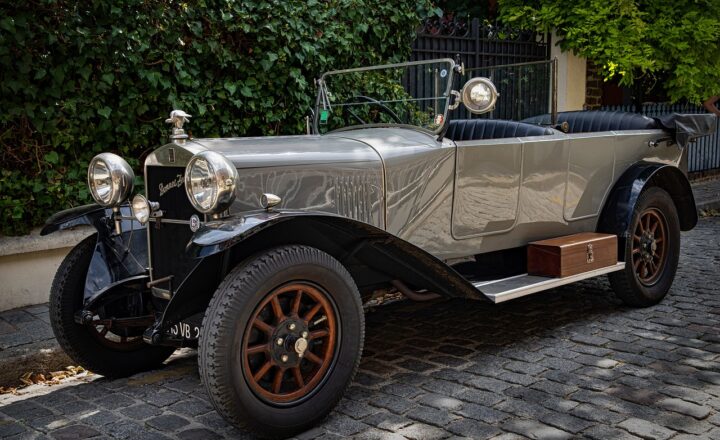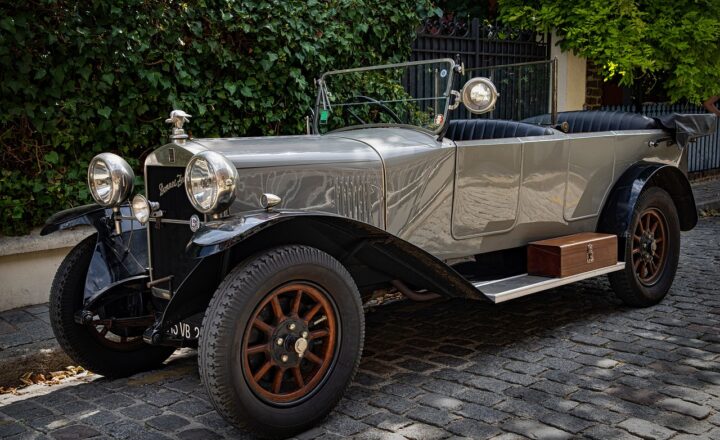The Legendary Volkswagen Bus: From Counterculture Icon to Collector’s Dream
November 13, 2024

The Volkswagen Bus, also affectionately known as the VW Type 2, has held a special place in the hearts of car enthusiasts and casual drivers alike since its debut in the late 1940s. With its distinct shape, spacious interior, and steadfast reliability, the Volkswagen Bus has embodied freedom and adventure for generations.
As we delve into its history, cultural significance, and evolution, it becomes clear why the VW Bus transitioned from a humble workhorse of the post-war era to a cherished collector’s item of today.
1. The Birth of the Volkswagen Bus
The story of the Volkswagen Bus begins in the aftermath of World War II. In 1947, Dutch importer Ben Pon recognized the potential for a versatile vehicle that could transport goods and people alike. Inspired by a prototype he envisioned, he sketched a design that would eventually become the first Volkswagen Bus. Production began in 1950 in Germany, and the first vans rolled off the assembly line, marking the dawn of a new era in transportation.
The VW Bus was designed with practicality in mind, providing ample space for passengers and cargo. Its air-cooled engine contributed to its reliability, while a unique rear-engine layout enhanced drivability and stability. With its affordable price point, the Volkswagen Bus quickly gained popularity, finding favor with families, tradespeople, and later, the burgeoning youth counterculture.
2. The VW Bus and Counterculture Movement
By the 1960s, the Volkswagen Bus became synonymous with the counterculture movement that defined the era. It found its way into the hearts of the youth seeking freedom, adventure, and new experiences. The iconic vehicle became a canvas for self-expression and creativity, often adorned with vibrant paint jobs, peace symbols, and groovy designs.
From the California surf scene to the music festivals of Woodstock, the VW Bus was there, serving as both transportation and a symbol of a carefree lifestyle. Bands like The Grateful Dead and Janis Joplin embraced the bus, transforming it into an emblem of the hippie era, solidifying its place in pop culture and music history.
3. Evolution Through the Decades
The Volkswagen Bus saw several design changes throughout its production run, with various models reflecting the changing tastes and demands of society. The first-generation model, known as the Split Window (1950-1967), was characterized by its distinctive split windshield and round headlights.
In 1968, the second generation, known as the Bay Window Bus, boasted larger windows, a more powerful engine, and improved safety features. Each subsequent model retained the iconic shape while integrating modern amenities.
As the years passed, however, declining sales and increased competition forced Volkswagen to cease production in the late 1970s in Germany, although assembly continued in Brazil until 2013. The air-cooled engine eventually evolved into a water-cooled design in the late 1980s, which was met with mixed reactions from die-hard enthusiasts.
4. The Volkswagen Bus Today
Fast forward to today, and the Volkswagen Bus remains a beloved symbol of nostalgia, wanderlust, and communal experiences. It has undergone an extraordinary transformation from an everyday people-mover to a highly sought-after collector’s item. Vintage models from the 1950s and 60s can fetch hefty sums at auctions, often selling for well into the six-figure range.
Buying a vintage VW Bus is not merely a vehicle purchase; it’s an investment in history and culture. Rallies and meet-ups celebrate this iconic vehicle, bringing together enthusiasts, families, and the curious to admire lovingly restored workhorses of the past.
In recent years, Volkswagen has even revived the spirit of the VW Bus by announcing the ID.Buzz, an electric version of the classic design, set to appeal to a new generation. This modern take retains the essence of the original while embracing contemporary technology and sustainability.
5. Why is the VW Bus a Collector’s Dream?
The allure of the Volkswagen Bus as a collector’s item is undeniable. Here’s why:
- Cultural Icon: The VW Bus is more than a vehicle; it represents an era of freedom and exploration. Collectors are drawn to its rich history and significance in pop culture.
- Diversity of Models: The range of models and trims allows collectors to choose vehicles that resonate with their passion or aesthetic taste.
- Community of Enthusiasts: Owning a VW Bus means joining a large, passionate community. Owners often share stories, organize meetups, and celebrate their love for these iconic vehicles.
- Restoration Projects: Many collectors find joy in restoring vintage buses. Skills in mechanics and customization enable them to create a unique vehicle reflecting their style.
As the popularity of classic cars continues to rise, the VW Bus stands as a testament to timeless design and cultural significance.
Conclusion
The Volkswagen Bus embodies an unparalleled spirit of adventure and self-expression. From its humble beginnings as a utilitarian vehicle to its status as a cultural icon and collector’s dream, the VW Bus continues to captivate enthusiasts around the globe. Whether on the road or sitting proudly in a garage, every Volkswagen Bus has its story to tell, connecting past and present through the enduring love for one of the most legendary vehicles in automotive history.
Embrace the legacy of the VW Bus and consider diving into the community that celebrates this iconic vehicle.








